In the dense rainforests of Colombia, a tiny creature with extraordinary defensive capabilities has earned a fearsome reputation. The golden poison frog (Phyllobates terribilis), weighing less than an ounce and measuring just two inches in length, carries enough poison to kill ten adult humans with a single touch. This remarkable amphibian has fascinated scientists, indigenous communities, and nature enthusiasts for generations. Its lethal potency combined with its striking golden appearance makes it one of the most intriguing and dangerous animals on our planet. This article explores the biology, habitat, toxicity, cultural significance, and conservation status of this remarkable amphibian, offering insights into how such a small creature evolved to become one of nature’s deadliest organisms.
Meet the Golden Poison Frog

The golden poison frog (Phyllobates terribilis) holds the distinction of being the most poisonous vertebrate on Earth. Native to the Pacific coast of Colombia, particularly in the Chocó Department, these small amphibians display vibrant coloration ranging from golden-yellow to pale green or orange. Unlike many poisonous species that acquire toxins from their diet, evidence suggests that golden poison frogs may produce some of their toxins internally, though they also sequester chemicals from their arthropod prey.
Despite their lethal reputation, golden poison frogs are not aggressive creatures. They don’t inject venom like snakes or scorpions but instead secrete poison through their skin. This passive defense mechanism protects them from predators who quickly learn to associate their bright coloration with danger. Scientists classify this as aposematic coloration—a warning signal that has evolved in many toxic species. The frog’s Latin name “terribilis” aptly describes its terrible potency, serving as nature’s warning label for one of its deadliest creations.
The Chemistry of Death: Batrachotoxin
The golden poison frog’s legendary toxicity comes from batrachotoxin, one of the most potent natural toxins known to science. This complex alkaloid compound affects the sodium channels in nerve and muscle cells. When batrachotoxin enters the bloodstream, it forces these channels to remain open, causing continuous nerve firing and muscle contraction. The result is immediate pain, paralysis, cardiac arrhythmia, and ultimately death from respiratory and cardiac failure. A single frog carries approximately 1,900 micrograms of toxin—with the lethal dose for a human being just 200 micrograms, explaining the “ten men” reference in many accounts.
What makes batrachotoxin particularly dangerous is its stability and the fact that it can be absorbed through intact skin. Unlike some toxins that break down quickly outside their host organism, batrachotoxin remains potent even on surfaces that have been touched by the frog. This persistence made the toxin valuable for indigenous hunting practices and has complicated scientific research, as researchers must exercise extreme caution when handling these specimens. The toxin is so potent that even dried museum specimens collected decades ago can contain harmful levels of batrachotoxin.
Natural Habitat and Distribution
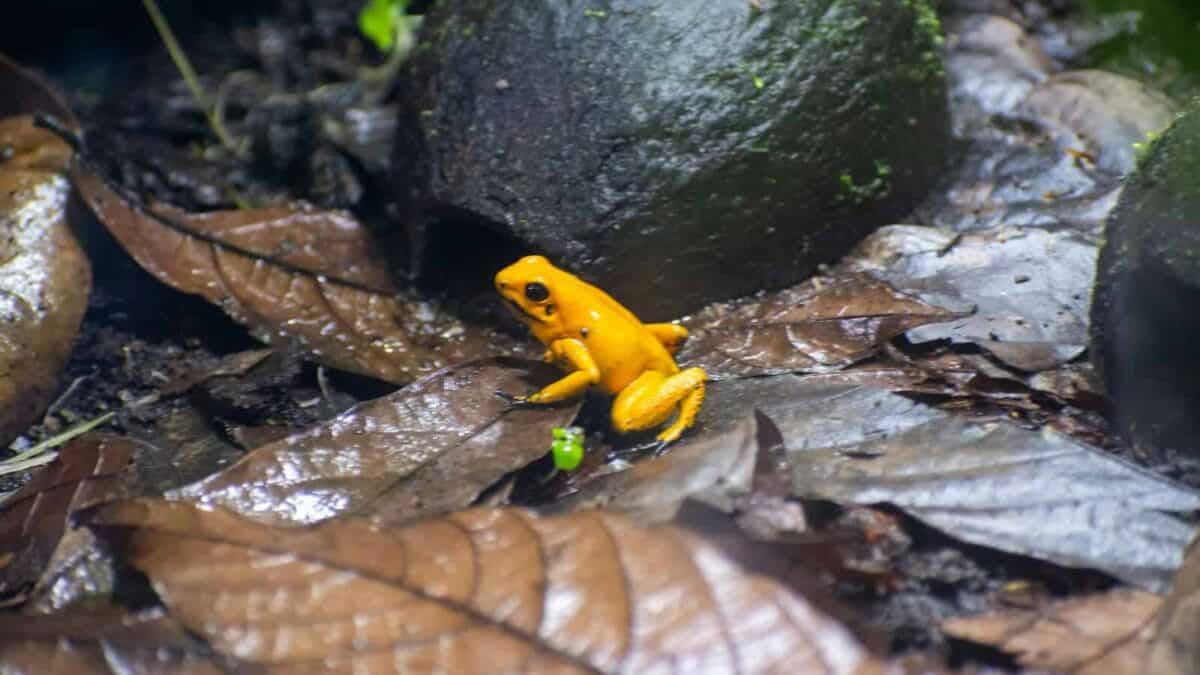
Golden poison frogs inhabit a remarkably small geographic range in the tropical forests of Colombia’s Pacific coast. They are primarily found in the Chocó Department, with concentrated populations in areas near the municipalities of Timbiquí and El Tambo. These frogs thrive in the humid, lowland rainforests with elevations below 200 meters, where they live among the leaf litter of the forest floor. The region’s consistent rainfall and high humidity provide ideal conditions for these amphibians, which, like most frogs, must keep their skin moist to facilitate respiration.
Unlike many amphibian species that require standing water for reproduction, golden poison frogs have adapted to a more terrestrial lifestyle. They lay their eggs on land, usually on leaf litter, and the male frog guards the eggs until they hatch. Once hatched, the male carries the tadpoles on his back to small water-filled cavities in plants or tree holes where they complete their development. This specialized reproductive strategy has tied them closely to specific microhabitats within their already limited range, making them particularly vulnerable to habitat disturbances and environmental changes.
Dietary Sources of Toxicity
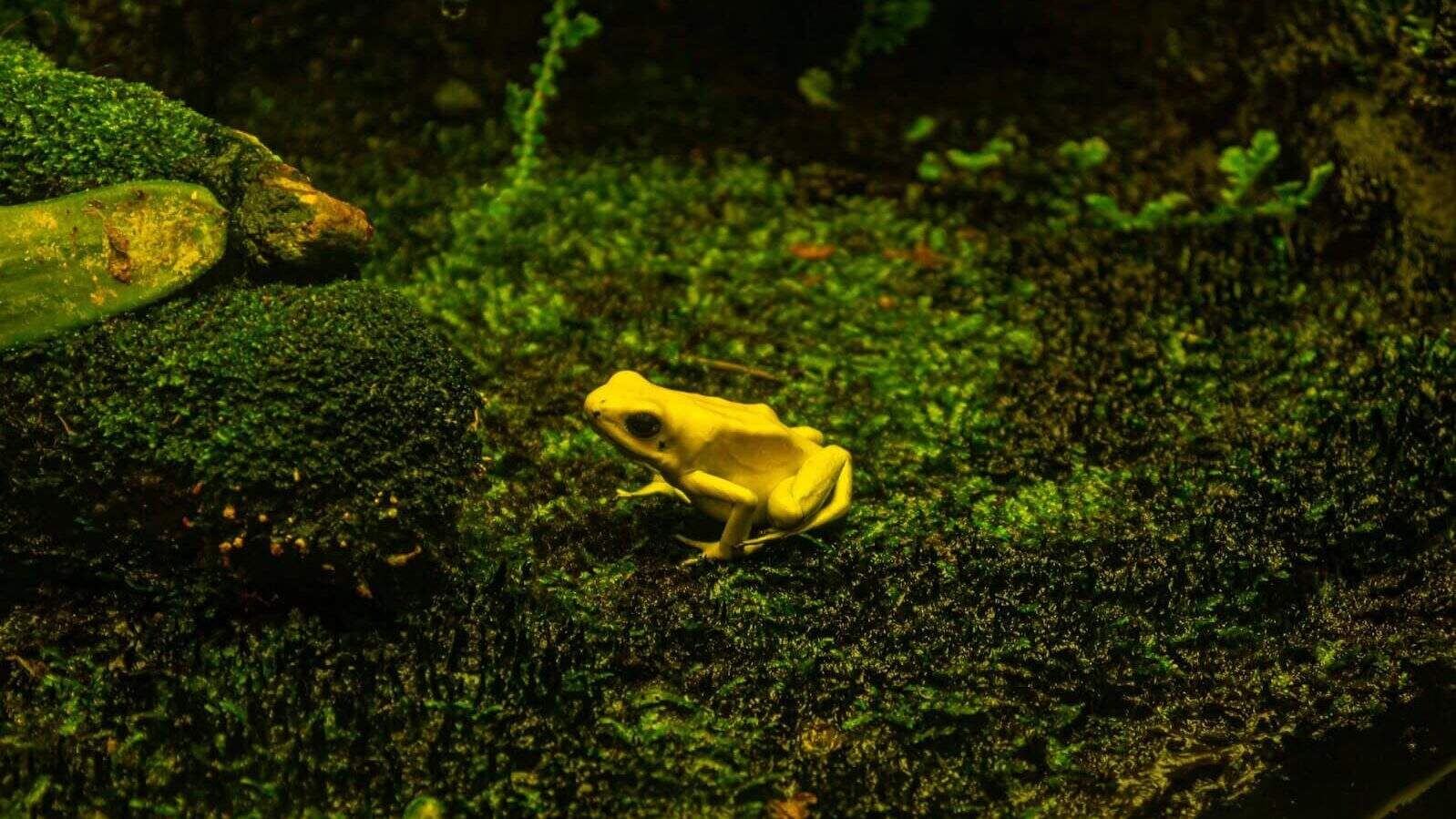
The extraordinary toxicity of golden poison frogs is linked to their diet in the wild. Scientists have discovered that these frogs do not produce batrachotoxin themselves but instead acquire it from the small arthropods they consume, particularly certain species of beetles and ants from the Melyridae and Formicidae families. The frogs bioaccumulate these toxins and modify them through metabolic processes, storing the concentrated compounds in granular glands throughout their skin. This dietary origin of their toxicity is confirmed by captive-bred specimens, which lack the poisonous properties of their wild counterparts when fed a diet of non-toxic insects.
Interestingly, the specific insects that provide these toxins are themselves not deadly to touch or handle, suggesting they may harbor symbiotic bacteria that produce the precursors to batrachotoxin or consume plants containing the chemical building blocks. The ecological relationship between these frogs, their prey, and the ultimate source of the toxins represents one of the most fascinating biochemical mysteries in nature. Scientists continue to study this complex relationship, as understanding it could have implications for both conservation efforts and potential medical applications.
Cultural Significance to Indigenous Peoples

For centuries, the Emberá people of Colombia’s rainforests have utilized the golden poison frog’s toxins for hunting. In a carefully developed ritual process, they would collect frogs and expose them to heat, causing the animals to secrete their toxins. The Emberá would then carefully dip their blowgun darts into this secretion, creating lethal hunting weapons. A single frog could poison up to 50 darts, and the toxin remained potent for over a year. Animals struck by these darts would be paralyzed within minutes, allowing hunters to take down monkeys and other prey that would otherwise be difficult to reach in the forest canopy.
Beyond its practical applications, the golden poison frog holds deep spiritual significance in Emberá culture. Known as “kokoi” in their language, the frog features prominently in their mythology and is associated with both death and healing. Traditional healers respected the dual nature of the frog’s poison—recognizing its lethal potential while also studying its properties for medicinal applications. This cultural knowledge, passed down through generations, represents one of the earliest examples of humans harnessing natural toxins and demonstrates the sophisticated ecological understanding developed by indigenous communities long before modern scientific classification of these species.
Evolutionary Advantages of Extreme Toxicity
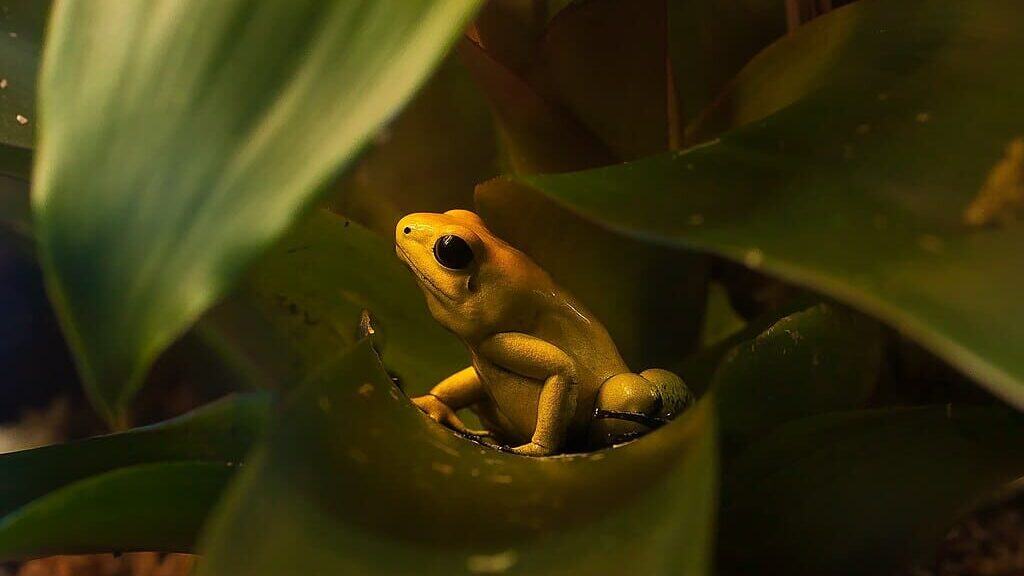
The evolution of such extreme toxicity in the golden poison frog represents a fascinating example of an evolutionary arms race. The development of batrachotoxin provides an almost perfect defense mechanism, as predators that attempt to eat these frogs typically die before they can consume their meal, preventing predators from developing immunity through repeated exposure. Natural selection has favored increasingly toxic individuals, as they would have higher survival rates and reproductive success. The frog’s bright coloration evolved in tandem with its toxicity through a process called aposematism—warning potential predators of danger.
This evolutionary strategy comes with trade-offs. The metabolic cost of processing and storing toxins requires energy that could otherwise be used for growth or reproduction. Additionally, the frog’s specialized diet restricts it to habitats where its toxic prey is available. Despite these limitations, the strategy has proven remarkably successful, allowing these small, otherwise vulnerable amphibians to thrive in environments filled with potential predators. The golden poison frog’s evolution demonstrates how extreme specialization can be an effective survival strategy, even as it creates ecological dependencies that may become vulnerabilities in changing environments.
Scientific Research and Medical Potential
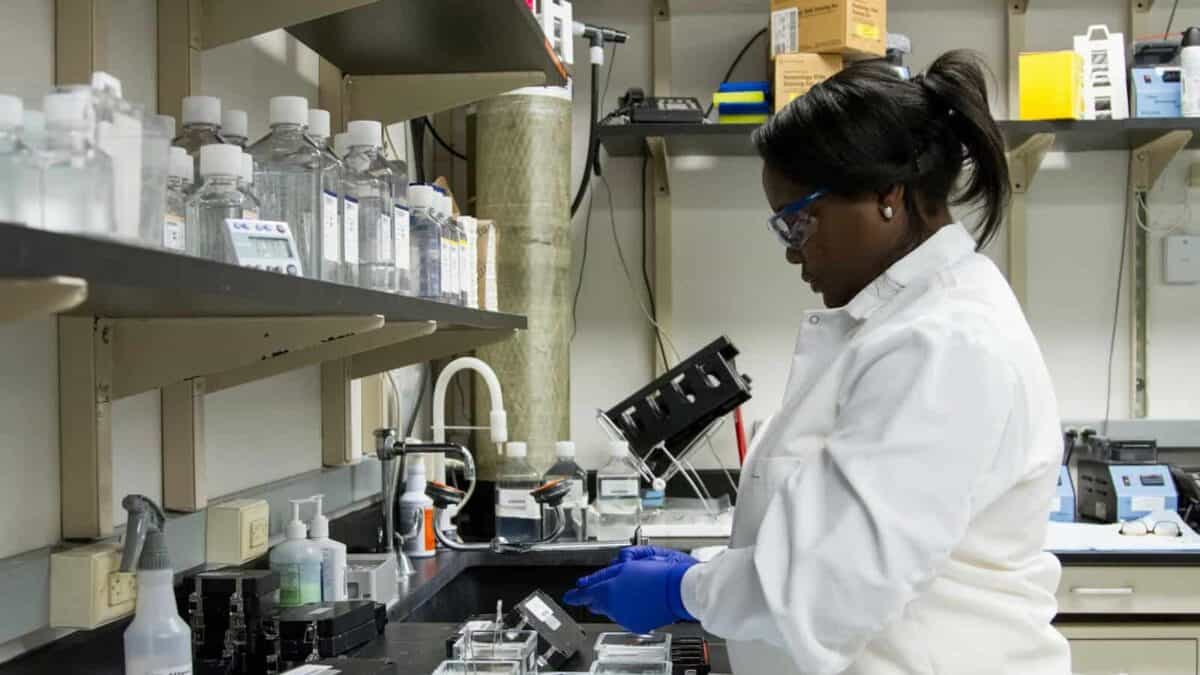
The unique properties of batrachotoxin have made golden poison frogs valuable subjects for scientific research. Neurologists and pharmacologists study the toxin to better understand how sodium channels function in nerve cells, providing insights into conditions like epilepsy, cardiac arrhythmias, and chronic pain. The precise way batrachotoxin binds to sodium channels has helped scientists develop models of these crucial cellular structures. This research has contributed to the development of local anesthetics, antiarrhythmic medications, and potential treatments for autoimmune disorders that affect nerve function.
Despite its deadly nature, batrachotoxin’s medical potential remains largely untapped. Scientists are working to develop synthetic versions and derivatives that retain useful properties while eliminating lethal effects. One promising area of research involves using modified batrachotoxin compounds as “molecular probes” that can target specific types of cells, potentially allowing for more precise drug delivery in treating cancer or neurological disorders. The golden poison frog thus represents not just a biological curiosity but a potential source of novel treatments for human disease—a powerful reminder that some of nature’s deadliest creations may hold keys to healing.
Conservation Status and Threats

The IUCN Red List classifies the golden poison frog as Endangered, with populations declining precipitously in recent decades. Habitat destruction presents the most significant threat, as Colombia’s Pacific coastal rainforests face pressure from agriculture, logging, mining, and infrastructure development. These activities not only destroy the frog’s habitat directly but also fragment remaining forest patches, making it difficult for populations to maintain genetic diversity. Climate change poses additional challenges, as the specific microclimate requirements of these frogs make them particularly vulnerable to shifts in temperature and precipitation patterns.
Illegal collection for the international pet trade further threatens wild populations. Despite international protection under CITES (Convention on International Trade in Endangered Species), the exotic appearance and notoriety of golden poison frogs create demand among collectors. Conservation efforts focus on habitat protection, with several reserves established within the frog’s range. Captive breeding programs in zoos and research institutions help maintain genetic diversity and provide opportunities for scientific study without impacting wild populations. However, successful conservation will ultimately require addressing the broader issues of deforestation and sustainable development in the region.
Life Cycle and Reproduction
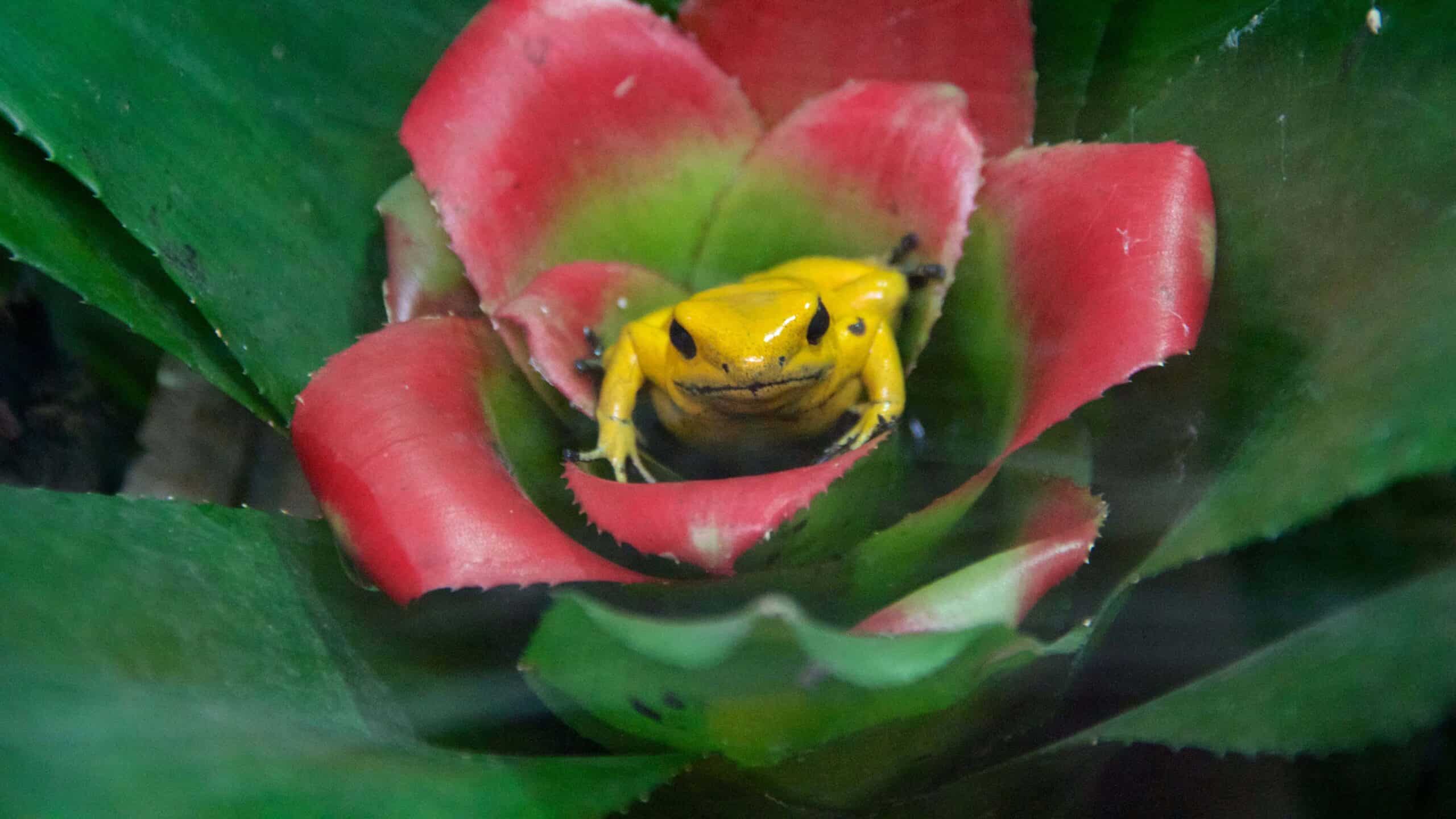
Golden poison frogs exhibit fascinating reproductive behaviors that diverge from many other amphibian species. Unlike frogs that produce hundreds or thousands of eggs, female golden poison frogs typically lay small clutches of 4-6 eggs in moist leaf litter on the forest floor. The male frog takes primary responsibility for parental care, guarding the eggs for 10-14 days until they hatch. This investment in fewer offspring with greater parental care represents an evolutionary strategy favoring quality over quantity, possible only because their toxicity provides effective protection from predators.
After hatching, the male continues his parental duties by allowing the tadpoles to wriggle onto his back, where they attach themselves with a special mucus. He then carries them to small water-filled cavities in plants, particularly in the leaf axils of bromeliads or tree holes. The male strategically distributes tadpoles, typically placing only one tadpole per water cavity to reduce competition for resources. The female periodically visits these sites to deposit unfertilized eggs, which serve as food for the developing tadpoles. After approximately two months, the tadpoles complete metamorphosis and emerge as fully formed froglets, already displaying their characteristic coloration though not yet producing the full complement of toxins.
Captive Specimens and Toxicity Differences

One of the most remarkable aspects of golden poison frogs is that specimens raised in captivity lack the lethal toxicity of their wild counterparts. Frogs born and raised in zoos or private collections, when fed a diet of non-native insects like fruit flies and crickets, never develop the batrachotoxin that makes wild specimens so dangerous. This phenomenon conclusively demonstrates the dietary origin of the frog’s toxins and has allowed for safer research and educational display of these fascinating amphibians. Captive specimens retain all other aspects of their biology and behavior, including their distinctive coloration and reproductive habits.
This toxicity difference has significant implications for conservation efforts. Captive breeding programs can produce frogs for scientific study, education, and potential reintroduction without the complications of handling lethal specimens. However, it also raises important questions about reintroduction protocols. Frogs bred in captivity would need access to their natural toxic prey sources to develop their chemical defenses if reintroduced to the wild. Without these defenses, reintroduced frogs would likely fall victim to predators. Conservation biologists are therefore studying not just the frogs themselves but the entire ecological community necessary to support viable wild populations, including the specific arthropods that provide toxin precursors.
Similar Species and Batrachotoxin Distribution
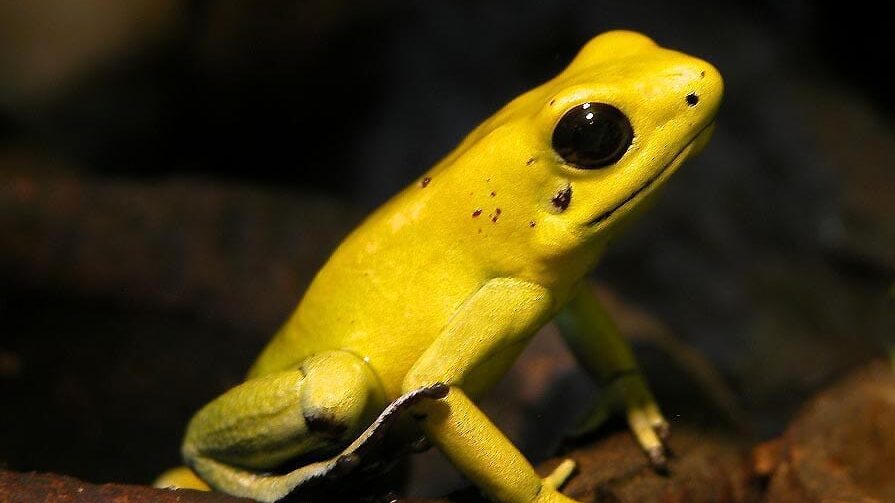
While the golden poison frog stands as the most toxic member of its family, several related species also produce batrachotoxins, though in lower concentrations. Other members of the Phyllobates genus, including P. bicolor and P. aurotaenia, contain significant but less potent amounts of batrachotoxin. These species share similar bright warning coloration but typically display different hues—bicolor appearing green with black markings and aurotaenia showing gold stripes on a black background. The variation in toxicity between these closely related species provides evolutionary biologists with a natural laboratory for studying how defense mechanisms develop and intensify over time.
Interestingly, batrachotoxins have been discovered in seemingly unrelated organisms from entirely different parts of the world. Certain birds in Papua New Guinea, specifically the Pitohui and Ifrita species, contain the same class of toxins, though how they acquire these compounds remains unclear. This convergent evolution—the independent development of similar traits in unrelated organisms—suggests that batrachotoxins represent a particularly effective chemical defense mechanism. The discovery of these toxins in such diverse species has prompted researchers to search for common dietary sources or symbiotic relationships that might explain this unusual distribution of a highly specialized chemical compound across different animal groups and geographic regions.
The golden poison frog stands as one of nature’s most remarkable paradoxes—a tiny, vibrantly colored amphibian capable of delivering death with a touch. Its evolution represents a perfect example of how specialized adaptations can provide extraordinary survival advantages, allowing a small, otherwise vulnerable creature to thrive in predator-rich environments. The complex relationship between these frogs, their diet, and their toxicity illustrates the intricate ecological connections that develop in biodiverse ecosystems like Colombia’s rainforests. As we continue to study these fascinating amphibians, we gain not only scientific knowledge but also a deeper appreciation for the complex biological relationships that have evolved over millions of years.
The conservation challenges facing golden poison frogs highlight broader environmental concerns about habitat loss and climate change. Protecting these iconic amphibians requires preserving not just the frogs themselves but entire functioning ecosystems. Their potential medical applications remind us of the practical importance of biodiversity conservation—we may be losing potential medicines and scientific insights with each species that disappears. The golden poison frog, with its deadly touch capable of killing ten men, serves as both a warning and a wonder, demonstrating nature’s incredible capacity for developing powerful chemical defenses and reminding us of how much we still have to learn from the natural world around us
- The World’s Most Poisonous Frog Can Kill Ten Men with One Touch - August 21, 2025
- Why Elephants Mourn Their Dead Just Like Humans Do - August 21, 2025
- Where to Watch Wild Horses Run Free in the U.S. - August 21, 2025

